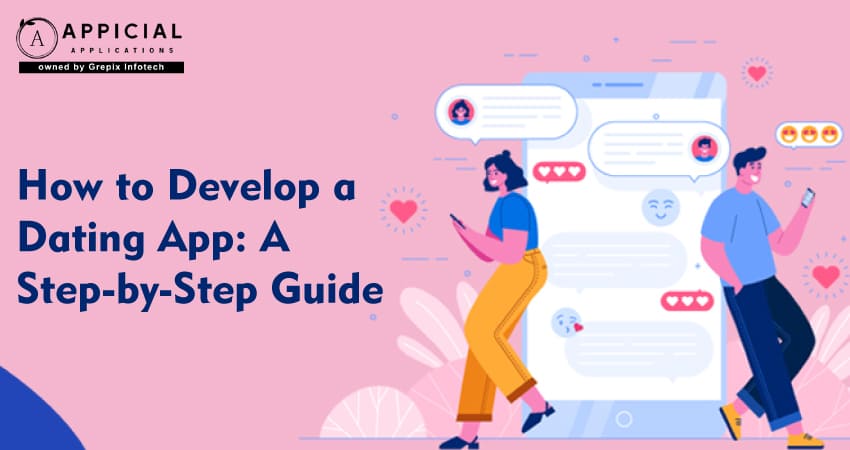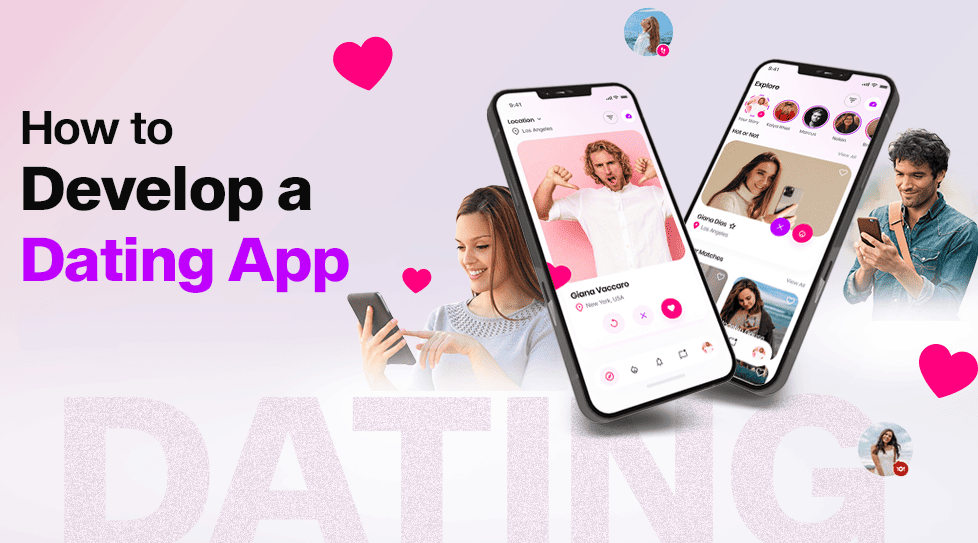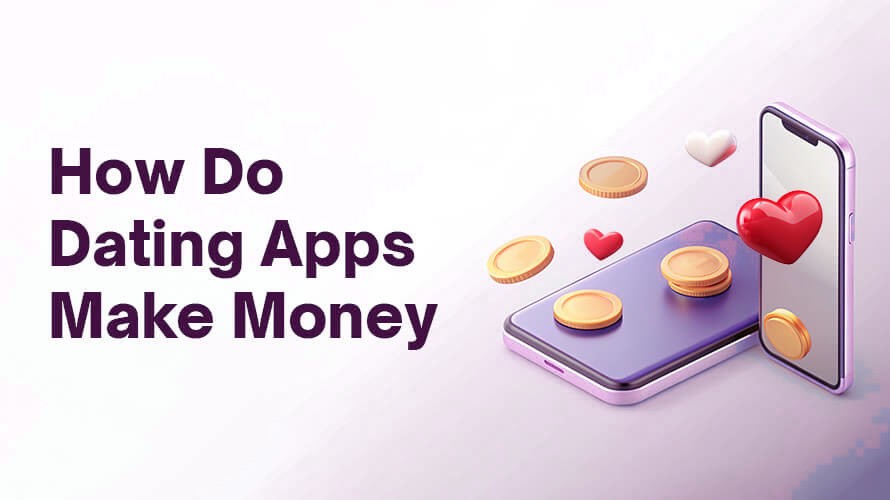
How to Develop a Dating App: A Step-by-Step Guide
In an era where digital connections have become the norm, dating apps have revolutionized the way people meet and form relationships. Developing a dating app can be an exciting yet complex venture, offering immense potential for growth and user engagement. This step-by-step guide, crafted by our expert team at Appicail Applications, provides you with a comprehensive roadmap to transform your innovative idea into a thriving platform. From market research and feature planning to ensuring top-notch security and user experience, we cover all critical aspects to help you create a standout dating app. Dive into this guide to discover how you can develop a successful dating app that not only attracts users but also fosters meaningful connections.
Creating a successful dating app involves thorough market research, defining unique features, and choosing the right technology stack. Essential features include seamless login/registration, advanced matchmaking algorithms, social feed from matches, distance-based matches, advanced privacy features, interests, likes/dislikes, and instant chat. Monetization strategies such as in-app purchases, premium subscriptions, ads, and partnerships can drive revenue. Overcoming challenges like user acquisition, retention, privacy concerns, and competition is crucial. With insights from successful apps like Tinder, Bumble, and Hinge, and leveraging Appicial Applications’ expertise, you can design, develop, and launch a robust dating app that stands out.
Why Build a Dating App?
Developing a dating app can be a highly profitable and impactful venture. Here's a look at the statistics and data that underscore the reasons why building a dating app is a smart business decision:
1. Market Size and Growth
- Global User Base: As of 2023, there were approximately 366 million online dating users worldwide, and this number is projected to grow steadily.
- Revenue: The global online dating market was valued at $7.35 billion in 2022 and is expected to reach $10.87 billion by 2026, with a CAGR (Compound Annual Growth Rate) of 10.7%.
2. User Engagement
- Time Spent: Users spend an average of 10 hours per week on dating apps, highlighting high engagement levels.
- Daily Usage: Popular dating apps like Tinder report over 1.6 billion swipes and 26 million matches per day.
3. Demographic Reach
- Age Groups: The largest user demographic is individuals aged 18-34, accounting for 55% of all dating app users. However, there is significant growth in users aged 35-54 as well.
- Gender Distribution: Dating apps tend to have a balanced gender ratio, with a slight male predominance (approximately 60% male and 40% female).
4. Monetization Potential
- ubscription Plans: Premium subscription plans contribute significantly to revenue. For example, Tinder Gold and Tinder Plus subscribers generate a substantial portion of Tinder’s revenue.
- In-App Purchases: Features like super likes, boosts, and profile enhancements drive additional income.
- Advertisements: Many dating apps monetize through targeted ads, benefiting from the high engagement and daily active users.
5. User Satisfaction and Effectiveness
- Success Stories: Many users find meaningful relationships through dating apps. For instance, 40% of American couples who met in the past decade were introduced online.
- User Retention: High user satisfaction leads to better retention rates. Engaging features and a positive user experience keep users coming back.
6. Competitive Advantage
- Innovation Opportunities: The dating app market, while competitive, offers ample room for innovation. Niche dating apps focusing on specific interests or communities (e.g., pet lovers, fitness enthusiasts) are gaining popularity.
- Technological Advancements: Integrating AI for better match suggestions, video dating features, and enhanced security measures can give new dating apps a competitive edge.
Types of Dating Apps
The dating app market is diverse, catering to various user preferences, relationship goals, and demographic segments. Here are the main types of dating apps that you can consider developing:
1. Traditional Dating Apps
These apps aim to connect individuals looking for romantic relationships, often with the potential for long-term commitments.
- Examples: Tinder, OkCupid, Plenty of Fish (POF)
- Features: Profile creation, matchmaking algorithms, swiping/matching, messaging.
2. Serious Relationship Apps
Focused on individuals seeking long-term relationships or marriage, these apps use more detailed profiles and compatibility algorithms.
- Examples: eHarmony, Match.com, Hinge
- Features: In-depth questionnaires, detailed profiles, advanced matching algorithms, compatibility scores.
3. Niche Dating Apps
Designed to cater to specific interests, hobbies, or communities, niche dating apps help like-minded individuals connect.
- Examples: FarmersOnly (for farmers), JDate (for Jewish singles), Christian Mingle (for Christians)
- Features: Community-specific profiles, interest-based matching, themed events or forums.
4. Casual Dating Apps
These apps target users looking for casual relationships, hookups, or friendships rather than serious commitments.
- Examples: Tinder, Bumble, CasualX
- Features: Quick profile setup, location-based matching, instant messaging.
5. Blind Date Apps
These apps add an element of surprise by hiding certain profile details until after a match is made or a conversation starts.
- Examples: Blindr, MyCheekyDate
- Features: Anonymized profiles, surprise reveals, conversation starters.
6.Geolocation Dating Apps
Geolocation dating apps have revolutionized the way people connect by leveraging location-based technology to match users with potential partners nearby. These apps use GPS and other location services to find and suggest matches based on proximity, making it easier for users to meet up in person. Here’s an in-depth look at geolocation dating apps:
- Examples: Tinder: Bumble
- Features: Location-Based Matching, Radius Settings, Geofencing
7.Traditional Dating Apps
Traditional dating apps aim to facilitate meaningful relationships by connecting users through detailed profiles and advanced matching algorithms. These apps cater to individuals seeking various types of relationships, ranging from casual dating to long-term commitments. Here’s an overview of traditional dating apps, their features, and some popular examples:
- Examples: OkCupid, match.com
- Features: Advanced Matching Algorithms, Search and Filters, Messaging Systems
How to Develop a Dating App

Developing a dating app can be a lucrative venture, provided it is done correctly. This guide outlines the essential steps to take from conceptualization to launch, ensuring you create an engaging and successful platform.
1. Market Research and Idea Validation
Before diving into development, it’s crucial to conduct thorough market research. Understand the current market trends, identify your target audience, and analyze your competitors. This will help you validate your idea and ensure there is a demand for your app.
- Identify Target Audience: Determine who your app is for. Are you targeting young professionals, senior citizens, or a niche market like pet lovers or fitness enthusiasts?
- Analyze Competitors: Study popular dating apps like Tinder, Bumble, and Hinge. Identify their strengths and weaknesses. Look for gaps in the market that your app can fill.
- Conduct Surveys and Interviews: Gather feedback from potential users to understand their needs and preferences. This will help you refine your app concept and features.
2. Plan App Features and Functionality
List down all the features you want in your app. Categorize them into must-have and nice-to-have features. This will help you prioritize development.
- User Profiles: Allow users to create detailed profiles with photos, bios, and personal information.
- Matching Algorithm: Develop a matching algorithm that pairs users based on their preferences, interests, and behavior.
- Chat Functionality: Enable users to communicate through text, voice, or video chat.
- Geolocation: Use geolocation to help users find matches nearby. Privacy and Security: Implement robust security measures to protect user data and ensure privacy.
3. Choose the Right Technology Stack
Selecting the right technology stack is crucial for the success of your app. It impacts the app’s performance, scalability, and maintenance.
- Front-End Development: Use React Native or Flutter for cross-platform development, allowing you to build apps for both iOS and Android with a single codebase.
- Back-End Development: Use Node.js or Django for the back-end. These frameworks offer scalability and robust performance.
- Database: Choose a database like MongoDB or PostgreSQL to store user data securely.
- Cloud Services: Use AWS or Google Cloud for hosting and scaling your app.
4. Design the User Interface (UI) and User Experience (UX)
A well-designed UI/UX is essential for attracting and retaining users. It should be visually appealing, intuitive, and easy to navigate.
- Wireframes and Prototypes: Create wireframes and prototypes to visualize the app’s layout and flow. Use tools like Sketch, Figma, or Adobe XD.
- User Testing: Conduct user testing to gather feedback on the design. Make necessary adjustments based on user input.
- Consistent Branding: Ensure the app’s design aligns with your brand’s identity. Use consistent colors, fonts, and icons.
5. Ensure Privacy and Security
Privacy and security are paramount in a dating app. Users need to trust that their data is safe and their privacy is protected.
- Data Encryption: Use end-to-end encryption for all user data and communications.
- Secure Authentication: Implement secure authentication methods like OAuth, two-factor authentication, and biometric login.
- Privacy Controls: Provide users with granular control over their privacy settings, such as who can see their profile and personal information.
6. Test and Debug
Thorough testing is crucial to ensure your app is bug-free and performs well under different conditions.
- Functional Testing: Test all features to ensure they work as intended.
- Performance Testing: Check the app’s performance under various conditions, such as high traffic or low internet speed.
- Usability Testing: Ensure the app is easy to use and navigate.
- Security Testing: Identify and fix any security vulnerabilities.
7. Launch and Market Your App
Once your app is ready, it’s time to launch and promote it to attract users.
- App Store Optimization (ASO): Optimize your app’s listing on the App Store and Google Play Store. Use relevant keywords, an engaging description, and attractive screenshots.
- Marketing Strategy: Develop a marketing strategy to promote your app. Use social media, influencer marketing, content marketing, and paid ads to reach your target audience.
- Launch Events: Host launch events or online webinars to create buzz around your app.
8. Gather User Feedback and Improve
After launching your app, continuously gather feedback from users and make necessary improvements.
- User Reviews and Ratings: Monitor user reviews and ratings on the app stores. Address any issues promptly.
- In-App Feedback: Provide an option for users to give feedback directly within the app. Analytics: Use analytics tools to track user behavior and identify areas for improvement.
Additional Tips for Success
- Stay Updated with Trends: The dating app market is constantly evolving. Stay updated with the latest trends and technologies to keep your app relevant.
- Engage with Your Community: Build a strong community around your app. Engage with users on social media and forums to create a loyal user base.
- Invest in Customer Support: Provide excellent customer support to address user issues and concerns promptly. This will help build trust and improve user retention.
- Focus on User Safety: Ensure user safety by implementing measures like profile verification, reporting, and blocking features. Promote a safe and respectful environment on your app.
- Leverage Data Analytics: Use data analytics to understand user behavior and preferences. This will help you make data-driven decisions and improve your app’s performance.
Also Read: Spark Digital Romance: Transformative Dating App Development That Wins Hearts
Key Features for a Dating App
1. Login/Registration
A seamless and secure login/registration process is crucial for user retention. Implement social media integration to allow users to sign up using their Facebook, Google, or Apple accounts for convenience. Additionally, provide options for email and phone number verification to ensure user authenticity. To enhance the user experience, include a profile setup wizard that guides users through adding photos, personal details, and interests, making the registration process intuitive and engaging.
2. Matchmaking Algorithms
Develop advanced matchmaking algorithms that analyze user behavior, preferences, and profiles to suggest highly compatible matches. Incorporate AI and machine learning to continuously refine match suggestions based on user interactions and feedback. Provide compatibility scores or percentages to give users insight into how well they match with others, enhancing the overall matchmaking accuracy and user satisfaction.
3. Social Feed From Matches
Integrate a social feed feature that allows users to see updates and activities from their matches. This can include posts, photos, and status updates, creating a more dynamic and interactive platform. The social feed helps users stay engaged and informed about their matches, fostering deeper connections and interactions.
4. Distance-based Matches
Leverage geolocation technology to offer distance-based matching. This feature allows users to find potential matches within a specified radius, making it easier to arrange meet-ups and fostering more convenient connections. Users can adjust their distance preferences to find matches either nearby or in different locations, catering to their specific needs and lifestyle.
5. Advanced Privacy Features
Prioritize user safety and privacy with advanced privacy features. Include options for profile visibility controls, allowing users to decide who can see their profiles. Implement secure authentication methods such as two-factor authentication and end-to-end encryption for messages. Provide features like blocking, reporting, and incognito mode to give users control over their privacy and ensure a safe dating environment.
6. Interests
Allow users to showcase their hobbies, passions, and preferences by adding interests to their profiles. This feature helps in better matchmaking by connecting users with similar interests and providing conversation starters. Highlighting interests can also make profiles more appealing and personalized, enhancing user engagement and connection quality.
7. Likes/Dislikes
Incorporate a feature that lets users like or dislike profiles, commonly implemented through a swipe-based interface. This simple yet effective interaction method helps streamline the matching process and makes it more engaging. Users can quickly express their interest or pass on potential matches, ensuring they are only connected with those they are genuinely interested in.
8. Instant Chat
Enable instant messaging to facilitate real-time communication between matched users. The chat feature should support text, emojis, and media sharing (photos, videos, voice messages) to enrich interactions. Ensure the chat system is secure and user-friendly, with options for notifications and read receipts to enhance user engagement and responsiveness.
How Do Dating Apps Make Money

When developing a dating app, a crucial aspect to consider is how it will generate revenue. Despite slight differences in monetization strategies between iOS and Android platforms, dating apps typically use similar revenue sources. Here are the most common approaches that app owners use to attract, engage, and retain users, ultimately driving revenue:
In-app Purchases
In-app purchases are a popular method for generating revenue in dating apps. Offering enticing items, such as virtual gifts, allows users to show interest and steer conversations in a meaningful direction. These purchases not only enhance user experience but also provide a steady stream of income.
Premium Subscriptions
Introducing premium subscription plans is another effective way to monetize your dating app. These plans can offer users various benefits, such as boosting their profiles, gaining unlimited likes, and unlocking exclusive features. Premium subscriptions cater to users willing to pay for an enhanced dating experience, thereby increasing your revenue.
Ads
Advertising remains a tried-and-true monetization method. By integrating ads into your app, you can generate revenue through impressions and clicks. However, it's essential to strike a balance; too many ads can be intrusive and lead to higher uninstall rates. Ensuring that ads are relevant and non-disruptive will help maintain a positive user experience.
Partnerships
Partnering with third-party companies is a lucrative way to monetize your dating app. You can allow these companies to promote their products and services within your app and charge them based on cost-per-click (CPC) or cost-per-mile (CPM) models. Relevant offers, such as flower delivery, restaurant reservations, hotel bookings, or taxi services, can enhance the user experience by helping them plan their first date directly through your app.
Common Challenges and How to Overcome Them
Developing a dating app comes with its own set of challenges. Here are some common challenges and tips on how to overcome them:
- User Acquisition: Attracting users to a new dating app can be challenging. Offer incentives like free trials or premium features to attract early users. Use targeted marketing campaigns to reach your audience.
- User Retention: Keeping users engaged and retaining them is crucial. Regularly update your app with new features and improvements. Use push notifications to re-engage users.
- Privacy Concerns: Users are concerned about their privacy on dating apps. Clearly communicate your privacy policies and use strong security measures to protect user data.
- Competition: The dating app market is highly competitive. Focus on your UVP and provide a unique and valuable experience to stand out from the competition.
- Technical Issues: Bugs and technical issues can hamper user experience. Conduct thorough testing and provide regular updates to fix issues and improve performance.
Case Studies: Successful Dating Apps
Looking at successful dating apps can provide valuable insights and inspiration for your own app. Here are a few case studies:
- Tinder: Launched in 2012, Tinder revolutionized the dating app industry with its simple swipe-based interface. It’s known for its ease of use and large user base. Tinder continuously innovates with features like Tinder Gold and Super Likes to keep users engaged.
- Bumble: Bumble, launched in 2014, differentiates itself by allowing women to make the first move. This unique approach has made it popular among users looking for a more respectful dating experience. Bumble has expanded its services with Bumble BFF and Bumble Bizz.
- Hinge: Hinge markets itself as the app “designed to be deleted,” focusing on long-term relationships. It uses detailed user profiles and prompts to facilitate meaningful connections. Hinge’s success lies in its focus on user experience and serious dating.
Conclusion
Increasingly, people are turning to the latest technologies and mobile devices to find love through digital dating. Despite the tough competition in the dating app market, numerous opportunities still await those who can seize them effectively.
With a plethora of mobile solutions catering to various tastes, it's crucial to identify and incorporate unique features that will set your app apart from the competition. The key is to develop an app that not only meets user requirements but also offers new and valuable benefits. This approach will help your dating solution stand out and become a market breakthrough.
If you have an app idea in mind, the next steps are to validate your concept and choose a trusted software vendor. Our team at Appicial Applications has extensive expertise in supporting companies in developing efficient and engaging dating apps.
We are excited to offer you top-notch mobile development services and guide you through the process of designing, coding, and launching your dating app. Contact us today to build a robust dating solution that will capture hearts. With dedication and the right approach, your dating app can become a leading choice for users seeking meaningful connections in the digital age.
Launch your vision with our mobile app development company, where innovation meets excellence to create cutting-edge mobile solutions.





